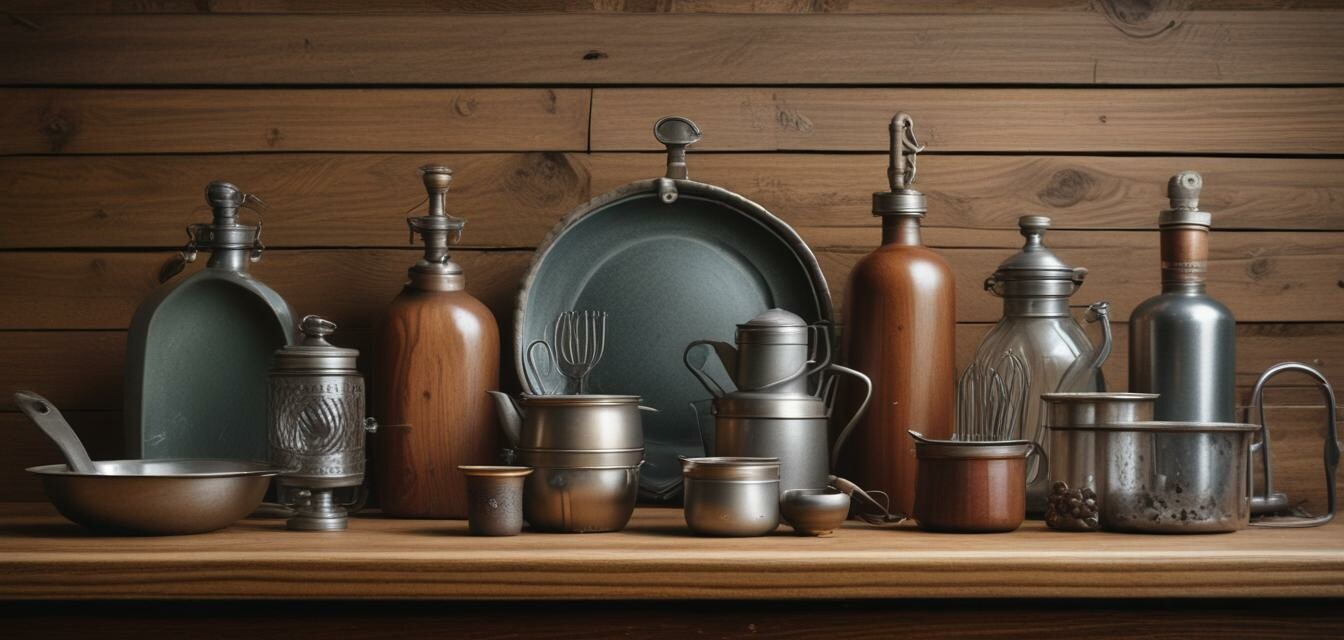
The Shift Towards Upcycled Kitchenware
Key Takeaways
- Upcycled kitchenware is a growing trend, minimizing waste and promoting sustainability.
- Unique designs in upcycled items add character to kitchens while being eco-friendly.
- Investing in upcycled kitchen products can lead to significant environmental benefits.
- Awareness of sustainable materials is increasing, shaping consumer choices.
- Upcycling contributes to resource conservation and supports a circular economy.
The kitchen is often the heart of the home, and with the increasing awareness of environmental issues, many individuals are making a conscious effort to incorporate sustainable practices into their cooking environments. Among the rising trends in eco-friendly kitchenware, upcycled kitchen items are gaining significant traction. This article explores the movement toward upcycled kitchenware, highlighting the benefits and unique characteristics that set these products apart.
What is upcycled kitchenware?
Upcycling is the process of transforming waste materials or unwanted products into new materials or items of better quality. When applied to kitchenware, it means creating unique utensils, plates, and storage options from items that would otherwise contribute to landfill waste. From glass containers to reclaimed wood, upcycled kitchenware showcases creativity while promoting sustainability.
Why is upcycling important?
The importance of upcycling in kitchenware extends beyond mere aesthetics. Here are some key reasons why upcycling is a crucial trend:
- Waste reduction: By repurposing materials, upcycling helps divert waste from landfills.
- Resource conservation: It reduces the need for new raw materials, thereby conserving natural resources.
- Unique designs: Each upcycled piece is one-of-a-kind, adding character and charm to any kitchen.
Comparing Traditional vs. Upcycled Kitchenware
| Aspect | Traditional Kitchenware | Upcycled Kitchenware |
|---|---|---|
| Sustainability | Higher environmental impact through production | Lower impact; reuses materials |
| Design | Mass-produced and often identical | Unique, with aesthetic diversity |
| Cost | Often more expensive due to brand name | Variable, often cost-effective |
| Durability | Depends on material used | Varies; often resilient if quality materials are used |
Trends Driving the Shift Towards Upcycled Kitchenware
Several factors are contributing to the growing popularity of upcycled kitchenware:
- Consumer consciousness: More people are educated about sustainability and look for eco-friendly utensils.
- Innovative design: Designers are increasingly using creativity to breathe new life into old materials.
- Accessibility: As more artisans and companies produce upcycled goods, these items are becoming easier to find.
Eco-Friendly Choices in Upcycled Kitchenware
Choosing upcycled kitchenware offers numerous options. Here are some popular materials used in upcycled kitchen products:
- Glass: Old bottles can be transformed into beautiful serving dishes or storage containers.
- Wood: Reclaimed wood is used to craft everything from cutting boards to spoon sets.
- Textiles: Old fabrics can be upcycled into reusable dishcloths or aprons.
How to Support Upcycled Kitchenware
Supporting this movement can be done in several ways:
- Shop local: Look for local artisans who specialize in upcycled kitchen products.
- Choose quality: Invest in durable upcycled goods that will last longer.
- Spread the word: Share your findings with friends and family to raise awareness.
Conclusion
The shift towards upcycled kitchenware is not just a passing trend; it represents a meaningful change in consumer behavior and environmental awareness. By choosing upcycled products, individuals can contribute to reducing waste, conserving resources, and supporting a more sustainable lifestyle. To learn more about sustainable kitchen options, explore our eco-friendly storage solutions, or check out our insights on buying guides for making eco-conscious choices.
Pros
- Unique and creative designs
- Supports environmental sustainability
- Often cost-effective
Cons
- Quality can vary based on craftsmanship
- Limited product availability compared to traditional items



